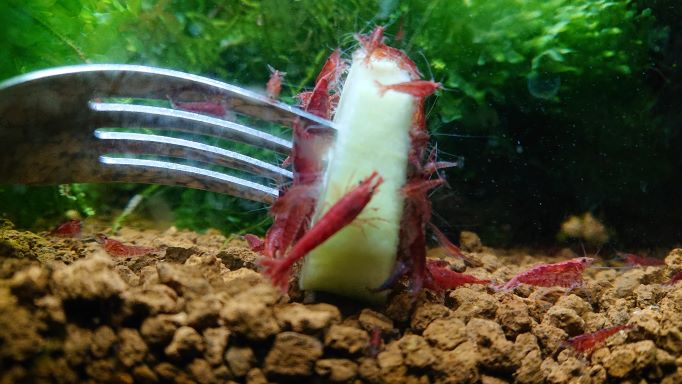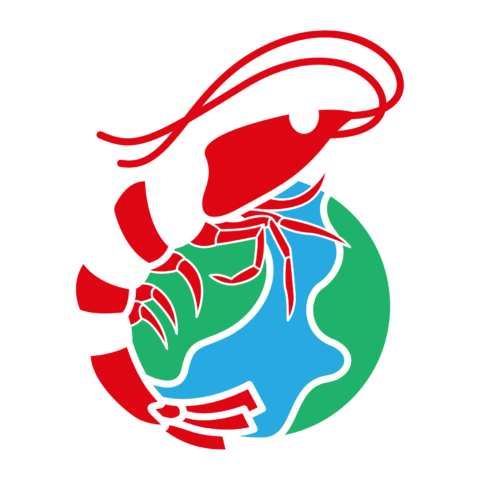It’s always exciting when you buy a new school of shrimp. But you might wake up to seeing some of them dead the next day for no apparent reason. What may have caused them to die overnight?
Here are 9 possible causes why cherry shrimp can die overnight:
- Unsuccessful molting
- Water poisoning
- Overfeeding
- pH changes
- Unsafe medication
- Toxic plants in the water
- Overpopulation
- Poor acclimation
- Disinfectant in water
This article will explain the above situations in detail. Read on to know why your cherry shrimp might have died out of the blue and what you can do to save them next time.

1. Unsuccessful Molting
Molting is a sensitive process for any kind of shrimp. It involves periodically shedding off the outer shell to form a new and healthier one. Cherry shrimp aren’t particularly hardy, so they can easily perish if they don’t molt properly.
One of the things that can make this process fail is how hard or soft the water is. Hardness of water is generally a measure of the mineral content in water.
When the water lacks minerals, the new shell takes too long to harden, which leaves the shrimp’s body vulnerable to infection and injury. Similarly, water that’s too hard forces the shrimp to absorb excess calcium, which causes its shell to harden. A shell that’s too hard to molt stresses the shrimp and might cause it to die.
2. Water Poisoning
Your cherry shrimp could be dying because the water they live in has been poisoned. Usually, this happens inadvertently, for example, when insecticides have been used in the aquarium’s surroundings.
In other cases, some of the fertilizers used in the water might cause the shrimp to die. Fertilizers with copper and lead are especially toxic to shrimp and should be avoided.
3. Overfeeding
When you feed your shrimp too often or too much, they’ll constantly excrete the excess feed. When this happens, the water will have a spike in ammonium nitrates.
Normal levels of ammonia are an important nutrient for phytoplankton which the shrimp eat. But when these levels rise too much, they can build up to deadly toxins in the shrimp’s internal organs after being inhaled.
4. pH Changes
According to the Food and Agriculture Organization (FAO), shrimp survive well at a pH of 6.2–7.3. Levels below that range are a danger zone for their health. High pH can put the shrimp in shock and cause them to stop eating.
Some of the reasons water pH may rise include:
- Calcium-rich rocks dissolving in the water
- Aquatic plants that trap carbon dioxide and nitrates
- Tap water that includes alkaline compounds
Buy shrimp from local breeders if you want to avoid a mismatch in pH between your aquarium water and the shrimp package water. Local breeders will most likely have the same water parameters as those in the water at your home.
5. Unsafe Medication
If you recently treated your shrimp, the medication could’ve poisoned them. Some antibacterials and antifungals may not be safe for your cherry shrimp due to high levels of copper and lead.
Overcome this by using natural remedies such as green tea, cinnamon sticks, or fennel greens for bacterial infections.
6. Toxic Plants in the Water
Some plants might look good in the aquarium. However, they could harm the shrimp in the long run. Some plants grown in nurseries may have toxic pesticides previously used on them. If you introduced such a plant into your tank, it could’ve killed your cherry shrimp.
7. Overpopulation
Overpopulation is usually a problem if the tank is too small. If you recently added a large number of shrimp into your aquarium, their environment might have been overwhelmed by the new numbers.
Likely, the bacteria in the tank wasn’t ready to take care of the biofiltration of the shrimp waste. In some rare cases, the increase in population might have outnumbered the amount of food available for the shrimp.
8. Poor Acclimation
It’s common for aquarium owners to buy shrimp and quickly transfer it into their new tank. Without proper acclimation, your cherry shrimp can get stressed out and eventually die before getting used to their new environment.
There are a few simple things you can do to acclimate your shrimp:
Use an Aquarium Water Conditioner
Using an aquarium water conditioner will prepare your water by absorbing toxins and neutralizing heavy metals in it. It’ll also help to neutralize ammonium compounds that may have been left by dead shrimp in your order.
Avoid Large Temperature Differences
Ensure the aquarium water is at the same temperature as that of the water in which you bought the shrimp. If the temperature difference is large, it can lead to death from failed molting. Use a thermometer to measure the temperature of the water before transferring your cherry shrimp.
Drip Acclimatization
Gradually introduce your aquarium water into your bag of shrimp. Drip acclimation is a process that lets the shrimp get used to its new water before you can fully transfer them there.
It involves using a siphon tube to slowly introduce droplets of the aquarium water into the shrimp bag. When the shrimp stabilize, they can be permanently moved into the larger tank.
9. Disinfectant in Water
If you use domestic-grade water in your aquarium, the chances are high that your shrimp don’t like it. The problem with this type of water is that it’s often disinfected with chlorine to make it safe for home use. While chlorinated water is safe for you to drink, it can be fatal to cherry shrimp.
To make your water aquarium-ready, use a dechlorinator before putting your shrimp into the aquarium. The Seachem Water Conditioner (available on Amazon.com) is an effective freshwater dechlorinator for your cherry shrimp aquarium.
Sources
- Aquatic Plant Central: Cherry Shrimp Sudden Death
- Shrimp Science: Molting and Common Problems
- Aquarium Info: Red Cherry Shrimp
- Food and Agriculture Organization: Water Quality Management
- Wikipedia: Hard Water
Recent Posts
How Do Freshwater Shrimps Live? Freshwater shrimp are fascinating creatures that play a crucial role in aquatic ecosystems. They help maintain water quality by consuming algae and decomposing...
How Many Freshwater Shrimp Per Gallon? 4 Key Factors Freshwater shrimp are popular additions to aquariums, but many hobbyists wonder: how many shrimp can comfortably live in a gallon of water? The...

